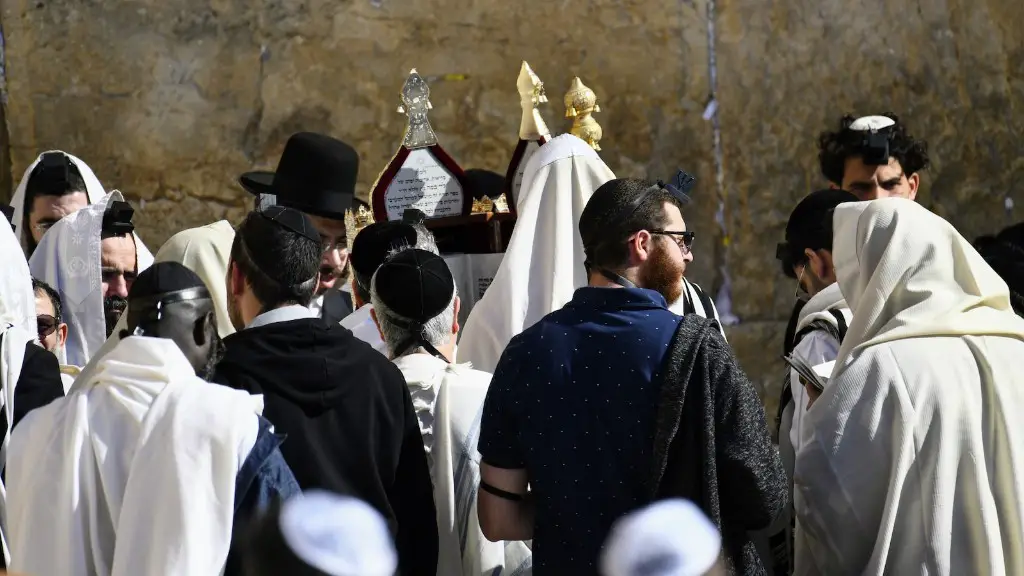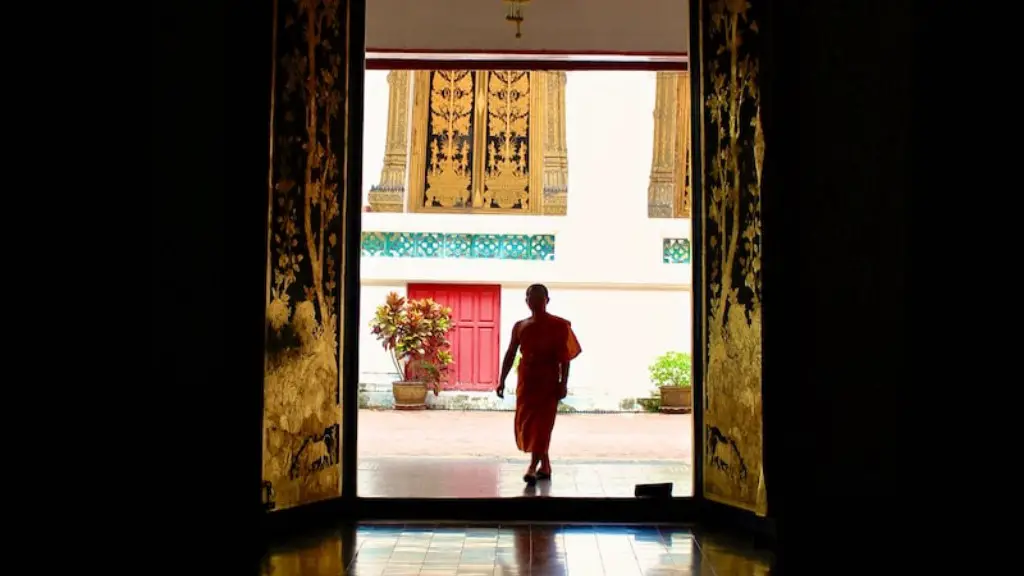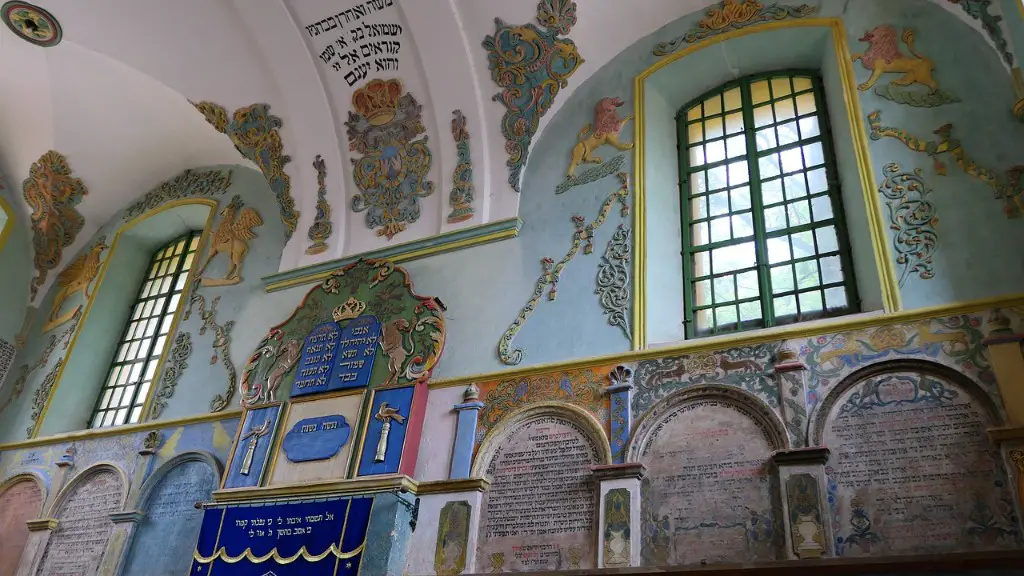Religion has been a part of human life since the beginning of our existence. Judaism is an ancient religion that has been around for over 5000 years. Throughout the past millennia, Judaism continues to be an important part of the cultural and religious lives of many people around the world. So then, what is the place of worship for Judaism and what is it like?
To begin with, the place of worship for Judaism is referred to as a synagogue. According to Rabbi Azriel C. Fellner, a synagogue consists of “a space where Jews come to either pray and worship, study, or socialize.” The Jewish people use synagogues for a wide variety of activities, including prayer, study, lectures, festivals, memorial services and social events.
A synagogue is traditionally divided into two main sections: the men’s side, which is located to the right of the inner sanctum, and the women’s section, which is located to the left. All members of the congregation, including men, women and children are expected to remain respectful and quiet in the synagogue. Congregants are also required to cover their head before entering the synagogue with a kippah, which is a head covering typically made of cloth.
Within the walls of the synagogue lies the Aron Kodesh. This is a wooden cabinet which houses the Torah scrolls. The Torah scrolls are handwritten scrolls which contain the first five books of the bible. In most synagogues, there is also a Bimah, which is a central platform used for reading and chanting portions of the Torah. In some synagogues, there is also a lectern for reading aloud prayers and sermons.
A synagogue typically has a number of artifacts which are important to the Jewish religion. For example, an Israeli flag is often hung in the main part of the synagogue, along with the national or international symbols of Judaism. The Ten Commandments, written in Hebrew, are typically framed and hung within the synagogue walls. Finally, there is usually a Ner Tamid, which is a light typically hung in the center of the synagogue. This symbolizes the eternal light of the Jewish faith.
Roles Of Jewish Leaders In The Synagogue
Some Jewish synagogues may also have a range of Jewish leaders. For example, there may be a rabbi who acts as a spiritual leader, a cantor who is responsible for leading services and a gabbai or shamash who is responsible for administrative work. Depending on the synagogue, there may also be a mohel who is responsible for performing religious circumcision ceremonies, or a shohet or shochet who is responsible for slaughtering kosher animals for consumption.
The role of the rabbi is to conduct the services and teach classes about Jews. He may also answer religious questions and act as a sort of spiritual guide. The cantor is responsible for leading the congregation in prayer and other services. The gabbai is responsible for running the synagogue and making sure it runs smoothly. Finally, the mohel, shochet, and shohet are responsible for performing circumcision ceremonies, slaughtering animals and ensuring that the food that is eaten is kosher.
Rituals Inside The Synagogue
In the synagogue, there are many rituals which are meaningful to the Jewish people. The most important ritual is the recitation of the Shema, which is considered to be one of the central mitzvofthe Jewish faith. This prayer is said every morning and night and involves the repetition of several verses from the Torah and blessings. Another ritual involves praying for the state of Israel, and a special benediction for the new week. In some synagogues, people may also say the Mourner’s Kaddish, which is a memorial prayer for a deceased person.
In some synagogues, the Shalom Aleichem is said as a welcome or greeting to people who enter and leave the synagogue. Additionally, there may be dedications made in honor of important people or events. These may include a Kiddush, which is a blessing usually said as an introduction to Shabbat or weekdays, or a Siyum, which is a celebration at the completion of a sacred text.
Connection of Synagogues To Community
Synagogues are more than just places of worship; they are also vital links to the surrounding community. Synagogues often have social and cultural events, like lectures, discussions, and concerts. They also provide a place to meet with other members of the community and to share stories, as well as provide a place to receive support and advice. Synagogues may also provide resources to the community, such as tutoring and other forms of assistance. Finally, some synagogues may host programs for visiting groups, such as student groups or families.
All these different activities that synagogues provide for the community, demonstrate how important it is for the Jewish people to be connected to each other and to the larger society. The synagogue serves as a reminder of the sacred early traditions of their ancestors, but also provides a modern platform for connecting with other people and promoting tolerance and understanding.
Growth and Development of Modern Synagogues
Over the past few decades, synagogues have undergone drastic changes in order to meet the needs of the Jewish community. In modern times, synagogues have embraced new forms of worship such as prayer services, evening lectures, and Shabbat celebrations. Additionally, they have begun to offer more modern styles of services and liturgy, such as the more musically-inspired services of Shirei Chabad. Furthermore, many synagogues have diversified their programming by offering classes in Jewish philosophy, Jewish studies and Jewish history.
Additionally, many synagogues have become more accommodating of different types of worshipers. For example, some synagogues have begun to provide services for interfaith couples, or for Jews by choice, as well as for individuals who identify as queer or transgender. Others have adapted their style of worship to suit the needs of the younger generation, such as incorporating more technology or modern music.
Synagogues in The 21st Century
In the 21st century, the role of the synagogue has become more complex. The synagogue remains a place of worship, but it has also become a hub for community support and education, a platform for interfaith dialogue and a space for embracing creativity and innovation. The synagogue has become a place that can accommodate different types of worshippers. Furthermore, the synagogue can be a home for people from all backgrounds, regardless of race, ethnicity, or sexual orientation.
Today, synagogues continue to serve as a sacred space for Jewish communities around the world. It is a place for gathering, learning, praying, and building relationships with one another. It is through synagogues that the Jewish people are able to unite in a shared faith and promote understanding and respect for one another.
Impact And Benefit Of Synagogues To Society
Synagogues are a vital part of the Jewish community, as they have an impact beyond the walls of the synagogue itself. Synagogues are an invaluable resource for strengthening society, fostering good citizenship, and advancing tolerance. By providing a platform for education and dialogue, synagogues are able to bring together people of different backgrounds and discuss important issues facing our world today.
Furthermore, synagogues offer individuals a sense of belonging and spiritual nourishment. With their welcoming and open atmosphere, synagogues are a safe space for those in need of comfort and support. Additionally, synagogues provide a space for members to learn about the Jewish faith, history and culture and to practice Jewish traditions.
Conclusion
In summary, synagogues are an important and integral part of the Jewish faith. Synagogues provide a space for religious practice and worship, as well as for education and community events. They have adapted and grown in order to meet the needs of the community. Additionally, they are nurturing, supportive spaces that bring people of different backgrounds together, promote understanding and tolerance, and provide spiritual nourishment.


